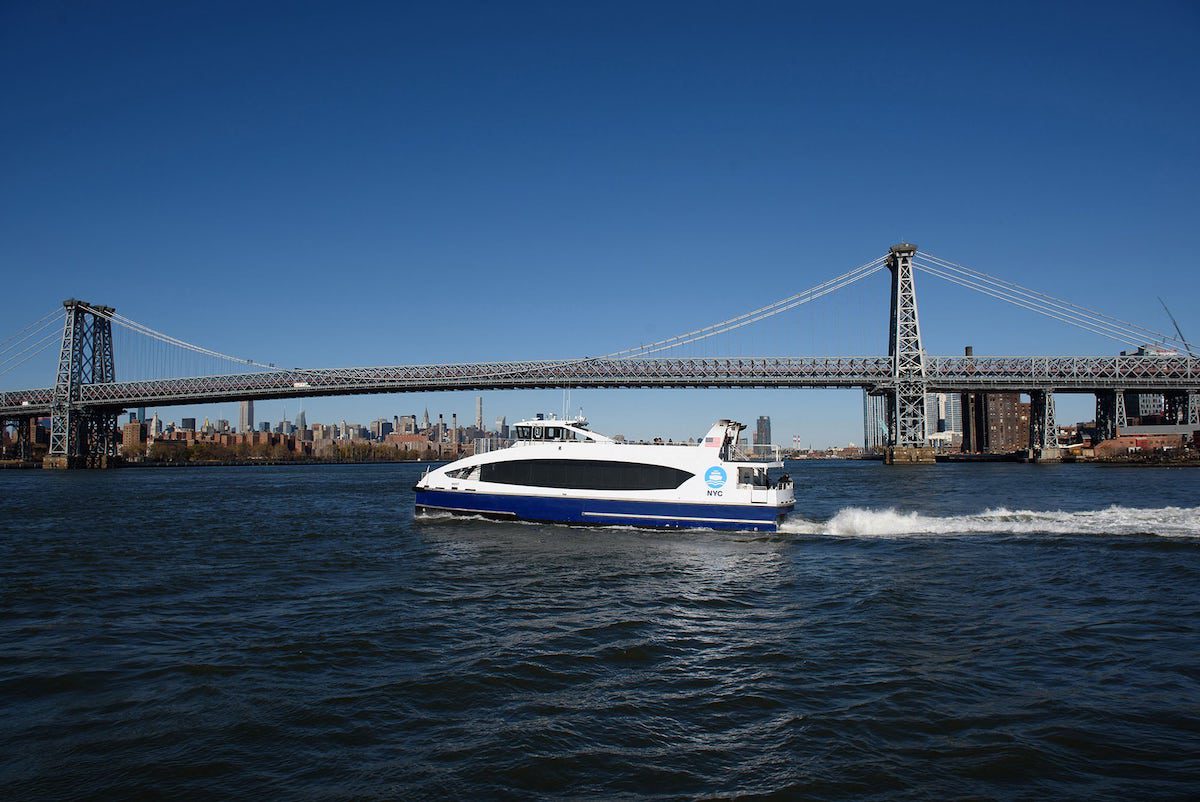NYC Ferry Operated by Hornblower provides ferry service connecting Manhattan, Brooklyn, Queens and the Bronx along the East River. Photo: NYC Ferry
By Henry Goldman (Bloomberg) — New York Mayor Bill de Blasio’s system of ferry boats linking Manhattan with transit-poor sections of Brooklyn, Queens and the Bronx is costing city taxpayers almost $11 per ride, 10 times more than they pay to subsidize subways and buses, according to the Citizens Budget Commission.
The system’s dependence on high taxpayer subsidies comes as city and state officials move toward enacting congestion pricing fees for motorists entering midtown Manhattan. That plan would cost commuters more and could increase demand for mass transit service, including the heavily-subsidized ferries. De Blasio has said he wants the cash-strapped Metropolitan Transportation Authority to take over and help finance the waterway system.
Last year, NYC Ferry ran operating costs of $56.7 million. Its 4 million riders paid only $2.75 — the cost of a subway trip — for a service costing $13.83 per ride. The $10.73 difference is made up with per-ride subsidies that are about twice that of the Staten Island Ferry, which is free.
Related: First NYC Ferry Takes to Water in Big Apple
Expansion plans for Coney Island service would only boost its expenses. Capital costs of boats and dock construction would be paid through municipal bonds, which will total $639 million through fiscal year 2022. The debt service would come to $48.6 billion, the business-supported fiscal watchdog reported Thursday. Officials at the city Economic Development Corp, which owns the ferry service, didn’t immediately respond to the report.
“The high subsidy is due to high operating costs and low revenue, which are the product of policy choices to keep fares low and to provide daily service on routes with variable demand, low ridership, and high fixed operating costs,” the report said. Although future per-ride subsidies may decline, the ferry system would still serve fewer passengers and require more taxpayer support than other forms of mass transit, the report concluded.
© 2019 Bloomberg L.P

 Join The Club
Join The Club











